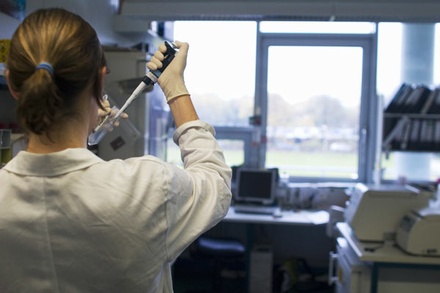Know Science And Want To Write?
Donate or Buy SWAG
Please donate so science experts can write
for the public.
At Science 2.0, scientists are the journalists,
with no political bias or editorial control. We
can't do it alone so please make a difference.
We are a nonprofit science journalism
group operating under Section 501(c)(3)
of the Internal Revenue Code that's
educated over 300 million people.
You can help with a tax-deductible
donation today and 100 percent of your
gift will go toward our programs,
no salaries or offices.
- Nearly Complete Harbin Skull From 146,000 Years Ago Belongs To The Denisovan Lineage
- Humans Have Always Adapted To Changing Climates - It's Why We Conquered The World
- Social Media Addiction Behavior, Not Time, Is A Harbinger Of Young Mental Health
- Bubbles In Ice Could Be A Future Medium For Secret Codes
- Golden Dome Missile Shield A 'No-Brainer', According To EMP Expert
- Isoprene: Plants Can Make Their Own Pesticide But The Environmental Cost Is High
- Climate Entrepreneurship And IT
-
 John
John ”Just this week, Iran responded to Israel preemptively bombing their planned nuclear weapons facility by launching missiles, and the Israeli missile defense system, the Iron Dome, stopped most of...
Golden Dome Missile Shield A 'No-Brainer', According To EMP Expert · 12 hours ago
-
 John
John We can know that this isn't purely a Trumpian thing because of the reviews from two years ago which basically said: 1) Astronomers have treated the people of Hawai'i like crap and owe...
The Thirty Meter Telescope May Be Cancelled Not by Ordinary People's Protest, but by Wealthy People's Whim · 23 hours ago
-
 Hontas Farmer
Hontas Farmer I'm not going to say you are wrong about any of the above. I'd not be surprised by a rising price tag as that seems to be how these things always go. I can't think of any big science...
The Thirty Meter Telescope May Be Cancelled Not by Ordinary People's Protest, but by Wealthy People's Whim · 1 day ago
-
 John
John To be honest, TMT did this to themselves by not being honest about the cost from the start. Had they told everyone that the cost for the installation would be on the order of $3 billion (most of...
The Thirty Meter Telescope May Be Cancelled Not by Ordinary People's Protest, but by Wealthy People's Whim · 2 days ago
-
 Zack Y.
Zack Y. Isn't this a dangerous inversion of how science is supposed to be done? What's to prevent this same scenario playing out for ANY potential discovery coming from a precision measurement...










